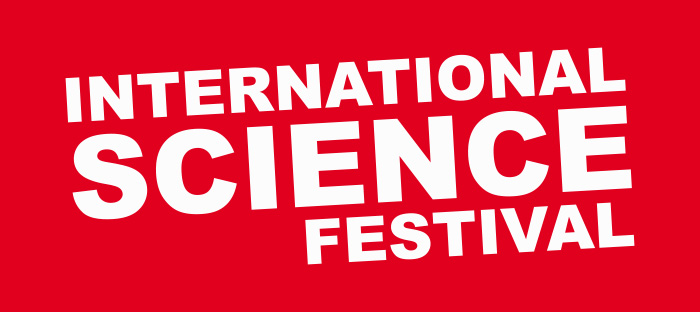Researchers Night
During the Researchers Night, numerous scientific and cultural institutions in Heidelberg, Mannheim and Eppelheim will open their doors for an entire night. The main objective of this EU-funded initiative is to build bridges between science and the general public.
The DAI - Heidelberg is inviting people of all ages to take part in a variety of activities (light & dark experiments, makerspace activities and the construction of an origami microscope). Meanwhile, in two lectures by renowned scientists from Vienna and Oxford we explore the relationship between humans and their environment. The lecture will investigate and (re)define: the relationship between humans and animals in a society that has distanced itself from nature, and a concrete nutrition plan that can benefit both humans and the environment.
Origami-Microscope: Build It, Try It out and Take It Home
In this workshop you can build a small microscope mostly out of cardboard (magnification x 140), experiment with it, and take it home.
Start time(s): 15:00; 16:00; 17:00; 18:00
Language of event: German/English
Location: Makerspace, DAI
Hack the Future - Do-It-Yourself Technology and Science: Makerspaces are laboratories and technology workshops for all. Here anyone can become a researcher, experiment with creative ideas and modern machines and learn how to improve and understand our everyday world. Together with experienced members of our maker community we show you how 3D printers and laser cutters work, how to program an embroidery robot or how to do biological experiments with simple tools and self-made research equipment.
Duration: Depending on the station, the participation takes between 10 and 30 minutes.
No registration required, but only limited number of 30 seats available.
Start time(s): 15:00 - 21:00
Location: Makerspace, DAI
Writing with Light
Take a closer look at the inner workings of a camera, and at how long-exposure photographs are made. Then, step in front of the lens and be the subject of your own luminous photo! Using glowsticks and flashlights, you’ll be able to write a message or symbol in the air in front of you, and in just a few seconds you’ll be able to see a brilliant result. Let loose your creativity for the camera!
Club Blacklight
Inside our blacklight space, you will be able to see first-hand the effects of long-wave, ultraviolet light on how we see the world around us, as well as ourselves! Ultraviolet light is used for a variety of purposes, such as insect removal, detecting counterfeit money, and in the performing arts. These uses, as well as the potential dangers, will all be examined under the fluorescent glow of our own blacklights. For best results, wear white or bright colors!
Start time(s): ongoing from 16:00-18:00
Location: DAI Great Hall
How Fast is the Speed of Light?
Light moves incredibly fast! Yet, it takes a little over 8 minutes for light from the sun to travel to earth. Using this statistic, we can make a to-scale model of our solar system that helps us visualize just how massive our universe is, all thanks to our knowledge of lightspeed and the nature of light’s movement. Come and take a stroll through our solar system!
Start time(s): ongoing from 16:00-18:00
Location: DAI Great Hall
Faces Aglow
Stop by our face-painting booth and one of our artists will transform your face into a glowing work of art! Using special phosphorescent face paint, your smile will literally light up the room! While getting your face painted, uncover the inner-workings of glow-in-the-dark substances. Be sure to see how your new look reacts under the blacklight and in the dark!
Start time(s): ongoing from 16:00-18:00
Location: DAI Great Hall
Wolf-Man-Dog: An Ancient Relationship and the Latest Research Results: Wolves are on everyone's radars again, and not everyone is happy about their return to Central Europe - for wolves are often seen as a nuisance to our modern world. However, they do play an essential role in our ecosystems and remind us that we do not have a monopoly on our habitat.
In the days of the hunters and gatherers, wolves were the peoples´ kin, teachers, and spiritual mediators. Nowadays, it is known that wolves started becoming domesticated to dogs about 35,000 years ago. Together with the help of these domesticated wolves, humans conquered the world. But how and why did the relationship between wolves and humans develop? And how did we go from wild wolves to dogs as companion animals? Professor Kurt Kotrschal, from the Wolf Science Center in Ernstbrunn, Austria, conducts experimental research into the differences between wolves and dogs which grew up under wolves-like conditions.
No registration required
Start time(s): 19:00
Duration ca. 1 hour
Location: DAI Great Hall
A “Planetary Health Diet” That is Both Healthy and Environmentally Sustainable: Although we eat three or more times a day, we rarely think about the environmental and health implications our food choices are responsible for. Not only is the food system a major driver of climate change, but it also uses more than two-thirds of the world’s freshwater resources, occupies more than a third of the Earth’s land surface, and over-application of fertilizers has led to dead zones in oceans. At the same time, imbalanced diets are responsible for the greatest number of deaths globally and in most regions. In the talk, Marco Springmann, Senior Researcher on Environmental Sustainability and Public Health at the University of Oxford, and co-author of the EAT-Lancet report “Food in the Anthropocene” published in spring 2019, will discuss a “planetary health diet” that is both healthy and environmentally sustainable.
No registration required
Location: DAI Great Hall
Start time(s): 20:15
Duration: one hour

Details:
Date: 27.09.2019
Time: 15:00






